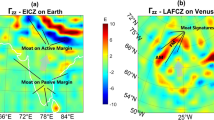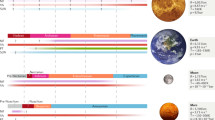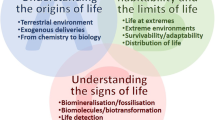Abstract
IN many different fields of geophysics and geology it would be convenient to be able to plot data on a terrestrial globe and then move the plotted data over the globe. For example, anyone interested in seeing how good the fit between the east coast of South America and the west coast of Africa really is would like to be able to trace an outline of South America on a transparent spherical cap and then move this outline against Africa.
This is a preview of subscription content, access via your institution
Access options
Subscribe to this journal
Receive 51 print issues and online access
$199.00 per year
only $3.90 per issue
Buy this article
- Purchase on Springer Link
- Instant access to full article PDF
Prices may be subject to local taxes which are calculated during checkout
Similar content being viewed by others
References
Carey, S. W. (edit. by), Continental Drift, 219 (Hobart, 1958).
Author information
Authors and Affiliations
Rights and permissions
About this article
Cite this article
HOSPERS, J. Preparation of Spherical Caps for Use on Terrestrial Globes in Investigations of Palæomagnetism and Continental Drift. Nature 203, 397–398 (1964). https://doi.org/10.1038/203397a0
Issue Date:
DOI: https://doi.org/10.1038/203397a0
This article is cited by
-
Die Paläogeographie der expandierenden Erde vom Karbon bis zum Tertiär nach paläomagnetischen Messungen
Geologische Rundschau (1966)
Comments
By submitting a comment you agree to abide by our Terms and Community Guidelines. If you find something abusive or that does not comply with our terms or guidelines please flag it as inappropriate.



